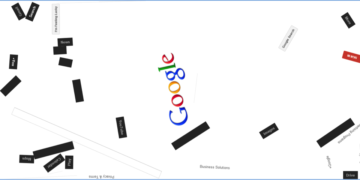The digital world is the new storefront for businesses, big and small. A compelling online presence is no longer a luxury; it’s a necessity. And at the heart of that presence lies your website. Effective web design and development are the twin engines that power your online success, driving traffic, engaging users, and ultimately, boosting your bottom line. This comprehensive guide will delve into the intricacies of both, providing you with the knowledge you need to navigate this dynamic landscape.
What is Web Design? Crafting the User Experience
Web design is the art and science of creating visually appealing and user-friendly websites. It’s about more than just aesthetics; it’s about understanding your target audience and crafting an experience that resonates with them. A well-designed website is intuitive to navigate, easy on the eyes, and effectively communicates your brand message. Key elements of web design include:
- User Interface (UI) Design: This focuses on the visual elements users interact with – buttons, menus, typography, color schemes, and overall layout. A clean and consistent UI is crucial for creating a positive first impression.
- User Experience (UX) Design: UX design takes a broader perspective, considering the entire user journey. It’s about ensuring that users can easily find what they’re looking for, complete tasks efficiently, and enjoy their overall experience on your website. Good UX design involves user research, wireframing, prototyping, and usability testing.
- Responsive Design: In today’s mobile-first world, responsive design is paramount. It ensures that your website adapts seamlessly to different screen sizes and devices, providing a consistent experience whether a user is on a desktop, tablet, or smartphone.
- Accessibility: A well-designed website is accessible to everyone, including users with disabilities. This involves adhering to accessibility guidelines (WCAG) and ensuring that your website is compatible with assistive technologies.
What is Web Development? Building the Digital Foundation
Web development is the process of building and maintaining the functionality of a website. It’s the technical backbone that brings the design to life. Web development involves:
- Front-End Development: This focuses on the client-side of the website – the parts users interact with directly. Front-end developers use languages like HTML, CSS, and JavaScript to create the structure, style, and interactivity of the website.
- Back-End Development: This handles the server-side of the website – the behind-the-scenes operations that make everything work. Back-end developers use languages like Python, PHP, Java, or Node.js to manage databases, handle user authentication, and process data.
- Full-Stack Development: Full-stack developers are proficient in both front-end and back-end development, allowing them to build entire web applications from scratch.
Key Considerations for Effective Web Design and Development
- Clear Goals: Before starting any web project, it’s crucial to define your goals. What are you trying to achieve with your website? Are you trying to generate leads, sell products, or simply provide information? Having clear goals will guide your design and development decisions.
- Target Audience: Understanding your target audience is essential. Who are you trying to reach? What are their needs and preferences? Tailoring your website to your target audience will significantly improve its effectiveness.
- Content is King: High-quality, engaging content is the heart of any successful website. Your content should be informative, relevant, and optimized for search engines.
- SEO Optimization: Search Engine Optimization (SEO) is the process of improving your website’s visibility in search engine results pages (SERPs). Effective SEO involves keyword research, on-page optimization, link building, and technical SEO.
- Mobile-First Approach: With mobile usage surpassing desktop usage, a mobile-first approach is essential. This means designing and developing your website primarily for mobile devices and then adapting it for larger screens.
- Security: Website security is paramount. Protecting your website from hackers and malware is crucial for maintaining user trust and protecting your data.
Emerging Trends in Web Design and Development
The world of web design and development is constantly evolving. Staying up-to-date with the latest trends is crucial for staying ahead of the curve. Some of the key trends to watch include:
- Artificial Intelligence (AI): AI is being integrated into websites in various ways, from chatbots and personalized recommendations to automated content generation.
- Progressive Web Apps (PWAs): PWAs offer the best of both worlds – the functionality of a native mobile app with the accessibility of a website.
- Voice Search Optimization: As voice search becomes more popular, optimizing your website for voice queries is increasingly important.
- Dark Mode: Dark mode is becoming increasingly popular, offering a more visually comfortable experience, especially in low-light conditions.
- Microinteractions: Subtle animations and interactive elements can enhance user engagement and create a more delightful user experience.
The Importance of Professional Web Design and Development
While it’s possible to build a basic website yourself using website builders, hiring professional web designers and developers is often a worthwhile investment. Professionals have the expertise and experience to create a website that is not only visually appealing but also functional, secure, and optimized for search engines.
Conclusion
Web design and development are critical components of any successful online strategy. By understanding the key principles, staying up-to-date with the latest trends, and investing in professional help when needed, you can create a website that drives results and helps you achieve your business goals. Your website is your digital front door; make sure it makes a lasting impression.


























